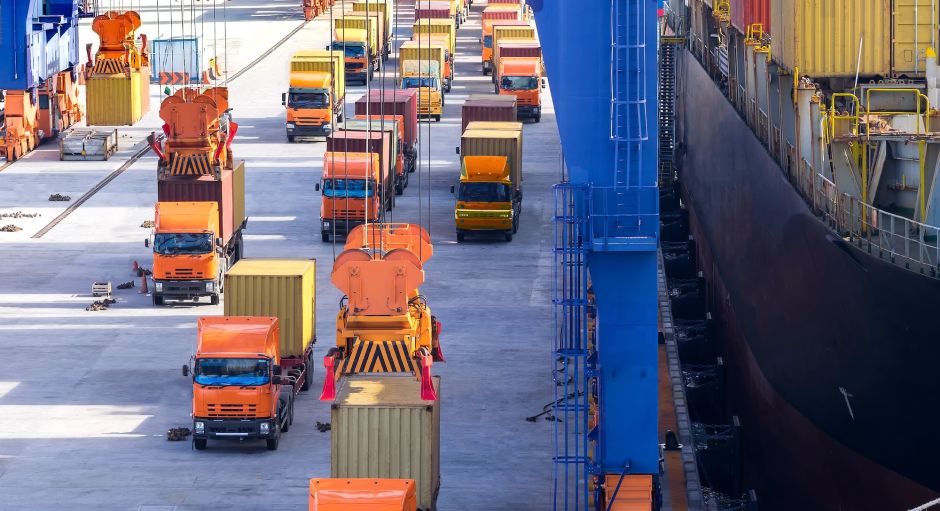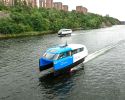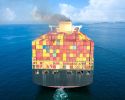New report on how to make the transfer happen

Despite long-standing political will, the transfer of goods from road to maritime transport is progressing slowly. According to a new research report from VTI, shipping's competitiveness could be enhanced by reducing "imbalances" or friction between various stakeholders with different goals and incentives. The report, funded by the Swedish Transport Administration, offers suggestions for policy measures and actions.
According to the government's national freight transport strategy, among other things, the shift of freight transport from road to sea should be promoted. The EU is on the same track. Already in 2011, the EU's white paper proposed that 30% of goods transported over 300 km by road should be transferred to other modes of transport, such as rail and maritime, by 2030.
We’re almost there. And despite the issue being explored in several reports, barely any transfer has occurred. In the short term, there are limited opportunities for shifting goods in Sweden, primarily due to capacity shortages in the rail infrastructure, but also due to a lack of transport alternatives that meet the needs of freight buyers. Shipping, which is often cost- and climate-efficient for transporting large volumes of goods over long distances, often has lower flexibility, frequency, and reliability compared to other modes of transport. The efficiency of maritime transport is hampered by its decentralized nature, consisting of many different stakeholders with different goals and incentives.
According to a new report from VTI, based on literature studies and three case studies around the ports of Gothenburg, Trelleborg, and Karlshamn, this creates "imbalances" or some form of friction between different actors.
"The trend towards larger and larger ships is one such example. It generates huge profits for the shipping companies that own them. But larger ships also require investments in infrastructure, and the costs for that fall on other actors. For example, on the ports, which need to redesign the quays, dredge, build new cranes, and staff the terminals with more personnel intermittently when the large ships arrive," says Petra Stelling, a researcher at VTI who led the research project behind the report, which, among other things, took a closer look at three ports – Gothenburg, Trelleborg, and Karlshamn – and their surrounding stakeholders.
There’s also a risk that the flows become too concentrated in larger ports, with the result that smaller ports are pushed out of competition, which in turn hinders the transfer of goods from road to sea. Apart from economies of scale, the central conflicts or "imbalances" between different actors according to the study involve land use, infrastructure, environmental requirements, and the need for digitalization.
So what can be done about the problem? Who are the stakeholders?
"Some measures within the system can be handled by the stakeholders themselves, while others must be directed at politicians and decision-makers at the policy level. For example, when it comes to digitalization, a lot is being done by the actors themselves, but they still have problems with standardizations where politics and authorities need to step in."
They can now get help from a conceptual model developed during the research project that describes the relationship between actors, imbalances, and measures. Among other things, the following actions are described:
- Increased cooperation: With shared responsibility and improved cooperation, cargo owners, ports, municipalities, terminal operators, land transporters, shipping companies, and authorities can resolve or even avoid goal conflicts. Knowledge exchange also strengthens the understanding of other actors, the sustainability of shipping, and creates synergies for the entire freight transport system.
- Horizontal and vertical land use: The introduction of dry ports is an effective measure to resolve horizontal land use conflicts within maritime transport. Another way is to utilize land vertically, for example by building multi-story "parking garages" for vehicle shipping.
- Digital tools: Digital systems make shipping more efficient by integrating different actors' information systems to provide real-time information and facilitate the coordination of activities.
- Alternative financing models: Develop new models to strengthen investments in maritime infrastructure.
- Fair fees: In maritime transport, fees such as port, pilotage, and fairway fees are the subject of much debate. By adjusting fee principles and introducing service fees, maritime transport can become more competitive and efficient.
- Coordination of permit processes: Reduce delays and uncertainty for investors through better coordination of permit processes.
Mer vind i seglen med färre skevheter – En undersökning av hur skevheter i sjöfartssystemet kan påverka sjöfartens konkurrenskraft has been authored by:
Petra Stelling, Jessica Wehner, Tobias Fors, Abd Alla Ali Mubder Mubder, Mary Catherine Osman, and Klara Ivanetti at VTI.
-
 Ny studie: Eldrivna pendelbåtar kan effektivisera Stockholms kollektivtrafik
Ny studie: Eldrivna pendelbåtar kan effektivisera Stockholms kollektivtrafik -
 EU: Sjöfartens utsläpp ökar
EU: Sjöfartens utsläpp ökar -
 Sociala relationer påverkar val av bränsle
Sociala relationer påverkar val av bränsle -
 Sjöfartens omställning kräver ”mjukare” påtryckningar
Sjöfartens omställning kräver ”mjukare” påtryckningar -
 Hon hade avtalad tid med Kapten ynkrygg
Hon hade avtalad tid med Kapten ynkrygg -
 Lighthouse omvärldsanalys 2025 – osäkerhet och tullar präglar sjöfarten
Lighthouse omvärldsanalys 2025 – osäkerhet och tullar präglar sjöfarten -
 Se seminariet Shipping in the Marine Environment
Se seminariet Shipping in the Marine Environment -
 Vad betyder egentligen de 90 procenten?
Vad betyder egentligen de 90 procenten? -
 Hålla där...
Hålla där... -
 Ny rapport: Klimatförändringarna ett hot mot de flesta större hamnar i världen
Ny rapport: Klimatförändringarna ett hot mot de flesta större hamnar i världen

